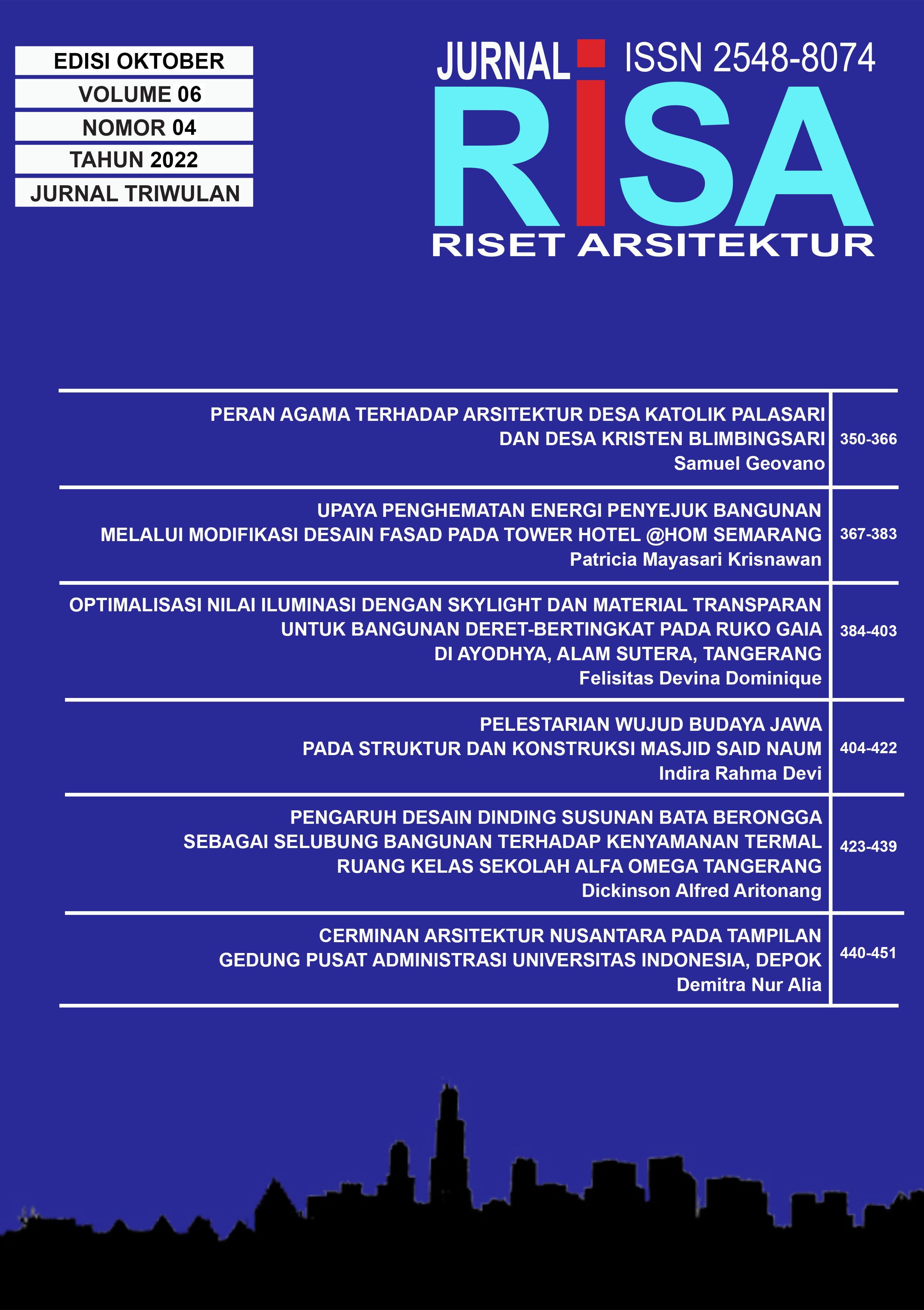PRESERVING JAVANESE CULTURAL FORM IN SAID NAUM MOSQUE STRUCTURE AND CONSTRUCTION
DOI:
https://doi.org/10.26593/risa.v6i04.6150.404-422Abstract
Abstract - In contemporary architecture, the practice of assimilating and reinterpreting traditional philosophies in recent architectural works are experiencing a surge. Traditional architecture of the past are conserved in present-day time, and is considered a development of traditional concepts with advanced technology. In spite of these progressions, the advent of modern architecture replaces the craftsmanship of local designs, such as the simplification of structural elements and ornaments. These conservation efforts are sometimes done without any care for the philosophical aspect of traditional forms, only imitating the physical aspects.
This research aims to discover Javanese cultural forms embedded in Said Naum Mosque, and the preservation methods used. Specific attributes to be researched further are the structural and construction systems. Qualitative methods are used to elaborate the structure and construction system of Said Naum Mosque, and identification of the Javanese cultural forms. The mosque is then compared to other Javanese mosques to break down the similarities and differences.
The end result of the research uncovers the Javanese culture preserved in the structure and construction system in the form of artefacts, activities, and ideas. Conservation methods taken are adapting and preserving of the cultural forms.
Adaptation of Javanese artefacts in the physical attributes of Said Naum Mosque were found, where the architect’s reinterpretations such as the removal of soko guru and the innovation of tajug are done in accordance to make use of newer, more modern materials such as concrete and steel. Activities are mostly preserved, considering the function did not stray much from the Javaneses’ piety and social relations. The forms of ideas and concepts underwent both adaptations and preservations, where adaptations happen as a more modern movement in structural and spatial, while preserving the Javanese people’s characters; understanding of each other and consideration for the nature.
The research concludes that Said Naum Mosque’s structural and construction aspects have underwent an extensive adaptation process, but still yielded an architectural product that conserved the culture of Java. This is especially evident in the structural order which follows the Javanese concepts of verticality and the honest, as-is nature of Javanese structural expressions.
Keywords: conservation, Javanese culture, structure, tectonics, Said Naum Mosque
Additional Files
Published
Issue
Section
License
Copyright (c) 2022 Indira Rahma D

This work is licensed under a Creative Commons Attribution-NonCommercial-ShareAlike 4.0 International License.












